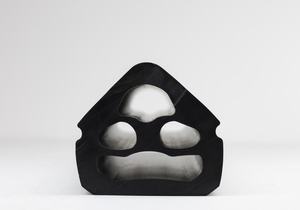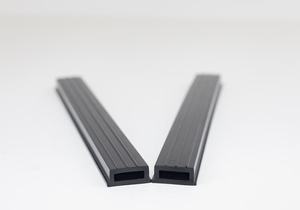
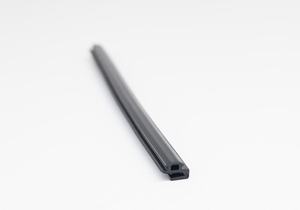
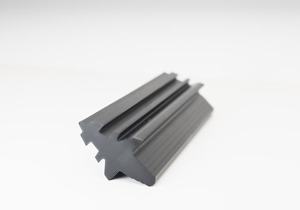
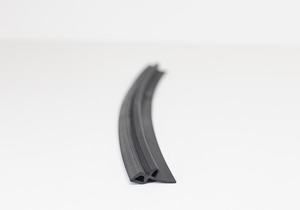
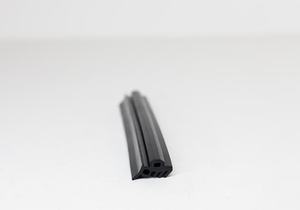
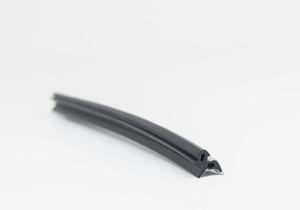
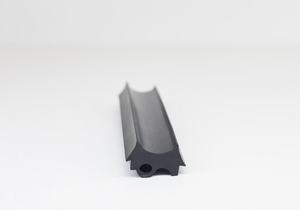
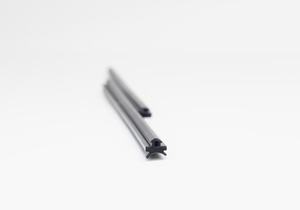
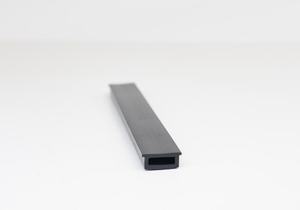
Steel door seals, also referred to as door weatherstripping or door gaskets, are crucial components of doors used in residential, commercial, and industrial settings. These seals serve several essential functions, including insulation, soundproofing, weatherproofing, and security enhancement. Steel door seals come in various forms and materials, each designed to address specific requirements and environmental conditions.
Here’s an in-depth description of steel door seals, covering their types, functions, applications, and installation procedures:
- Types of Steel Door Seals:
- Magnetic Seals: Magnetic door seals are equipped with magnets along their length, which provide a secure seal when the door is closed. These seals are commonly used in residential and commercial applications, offering excellent insulation and soundproofing properties.
- Compression Seals: Compression door seals feature a compressible material such as rubber, neoprene, or silicone, which forms a tight seal when the door is closed. These seals are ideal for weatherproofing and soundproofing applications, providing effective protection against drafts, moisture, and noise.
- Brush Seals: Brush door seals consist of densely packed bristles made from materials such as nylon or polypropylene, which create a barrier against dust, insects, and drafts. These seals are often used in industrial and commercial settings where maintaining a clean and pest-free environment is essential.
- Drop Bar Seals: Drop bar door seals are designed to seal the gap between the bottom of the door and the threshold. These seals feature a flexible rubber or neoprene bar that drops down when the door is closed, forming a tight seal against drafts, moisture, and insects.
- Interlocking Seals: Interlocking door seals use interlocking metal or plastic profiles to create a secure seal along the edges of the door. These seals provide enhanced security and weatherproofing, preventing forced entry and reducing heat loss or gain.
- Automatic Door Bottoms: Automatic door bottoms are equipped with a mechanism that automatically lowers a sealing mechanism when the door is closed, providing a tight seal against drafts, smoke, and noise. These seals are commonly used in commercial and institutional buildings.
- Functions of Steel Door Seals:
- Insulation: Steel door seals help improve the thermal insulation of buildings by preventing heat loss or gain through gaps and cracks around doors. This helps reduce energy consumption and improve indoor comfort levels.
- Weatherproofing: Door seals create a barrier against outdoor elements such as rain, snow, wind, and dust, ensuring that interiors remain dry and comfortable. Weatherproof seals also help prevent water damage and mold growth.
- Soundproofing: Steel door seals help reduce noise transmission between rooms or between indoor and outdoor spaces, providing a quieter and more peaceful environment. Soundproof seals are particularly beneficial in residential, commercial, and hospitality settings.
- Security Enhancement: Sealing gaps and cracks around doors with steel door seals helps enhance security by preventing forced entry and unauthorized access. Secure door seals also help deter intruders and improve the overall integrity of the building’s security system.
- Applications of Steel Door Seals:
- Residential Doors: Steel door seals are commonly used in residential doors such as entrance doors, patio doors, and garage doors to provide insulation, weatherproofing, and security enhancement.
- Commercial Doors: Steel door seals are widely used in commercial buildings, offices, shops, and restaurants to improve energy efficiency, maintain indoor comfort, and enhance security.
- Industrial Doors: In industrial facilities such as warehouses, factories, and manufacturing plants, steel door seals help protect against drafts, dust, noise, and contaminants, creating a safer and more productive working environment.
- Institutional Doors: Steel door seals are installed in institutional buildings such as schools, hospitals, and government facilities to provide insulation, weatherproofing, and soundproofing, as well as enhance security and occupant comfort.
- Installation of Steel Door Seals:
- Surface Preparation: Before installing steel door seals, ensure that the door and frame surfaces are clean, dry, and free from any debris, grease, or contaminants that could affect seal adhesion.
- Measurements and Cutting: Measure the length of the door edges and threshold accurately, and cut the door seals to the required length using appropriate tools such as scissors, utility knives, or saws.
- Placement and Attachment: Position the steel door seals along the edges of the door and the threshold, ensuring that they are aligned properly and cover any gaps or cracks. Secure the seals in place using screws, adhesive strips, or mounting brackets, following manufacturer recommendations.
- Adjustment and Testing: Test the door operation to ensure that the seals do not impede movement or cause friction. Make any necessary adjustments to ensure a proper fit and seal. Test the door for drafts, sound transmission, and security to verify the effectiveness of the seals.
In summary, steel door gaskets are essential components of doors used in various residential, commercial, industrial, and institutional applications. With their insulation, weatherproofing, soundproofing, and security-enhancing properties, steel door seals contribute to energy efficiency, indoor comfort, and occupant safety. Proper selection, installation, and maintenance of steel door seals are essential to ensure optimal performance and longevity.



